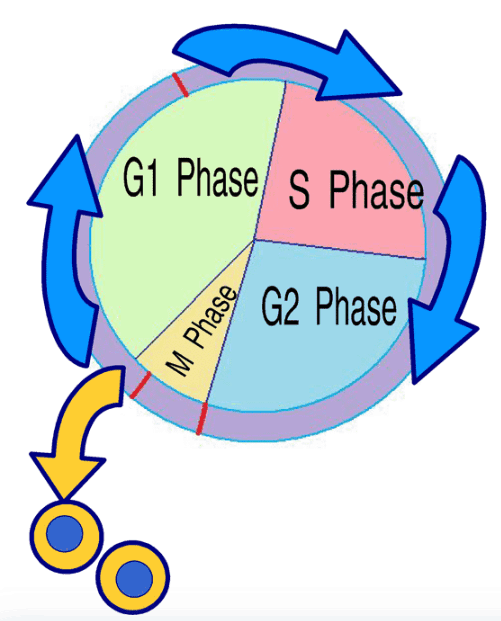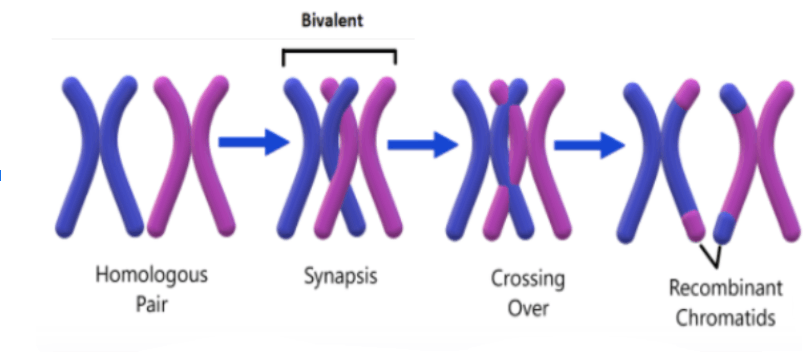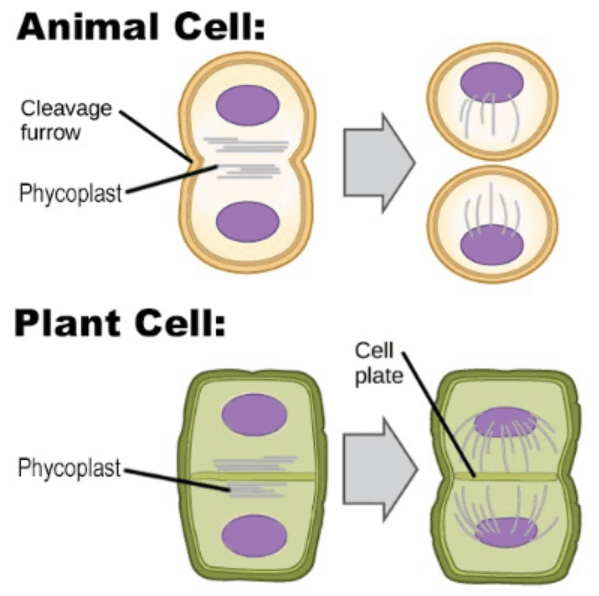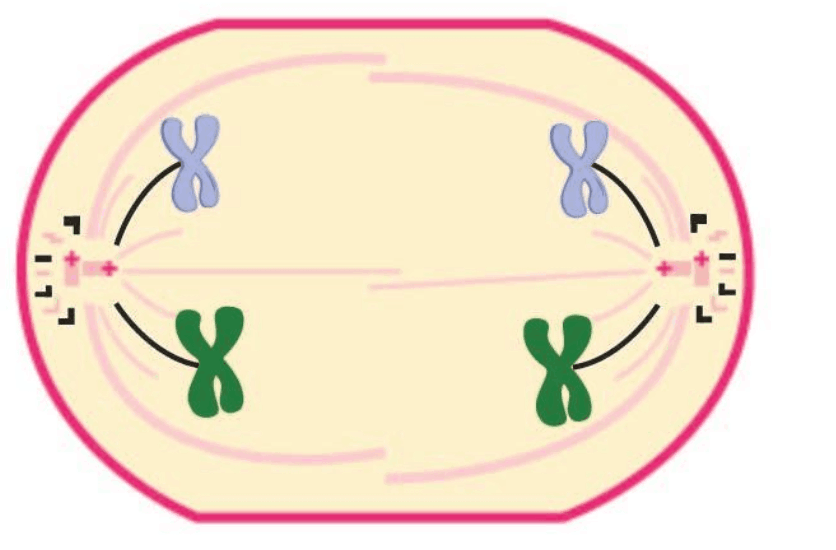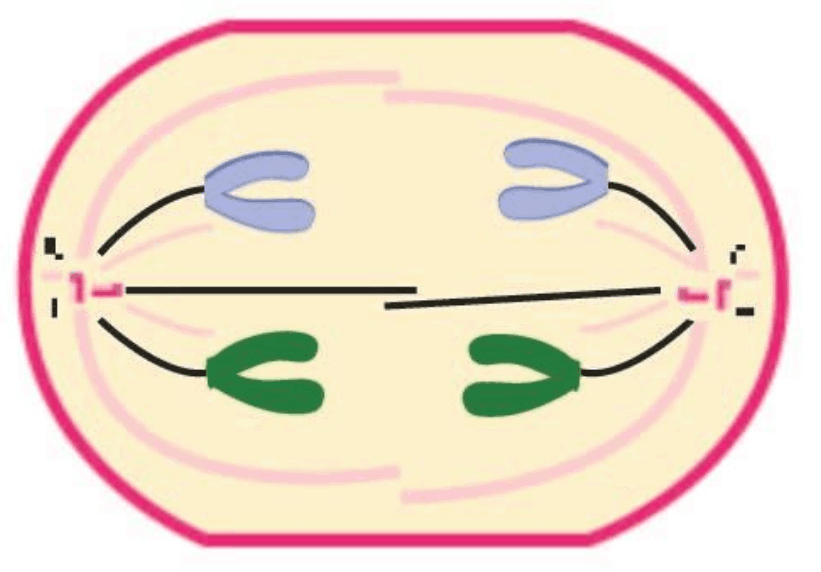Cell Cycle and Cell Division Questions and Answers for Class 11 Students
FAQs on NCERT Solutions For Class 11 Biology Chapter 10 Cell Cycle and Cell Division (2025-26)
1. What approach should you follow to answer NCERT Solutions for Class 11 Biology Chapter 10: Cell Cycle and Cell Division as per CBSE guidelines?
Begin with step-by-step explanations for each part of the question. Use correct biological terminology and structure your answers according to the official NCERT Solutions methodology. Where required, support your response with neat, labeled diagrams. Highlight key points related to stages and definitions, and ensure your solutions align with the CBSE 2025–26 marking scheme.
2. How do NCERT Solutions help clarify the differences between mitosis and meiosis for board exams?
NCERT Solutions present clear, point-wise differences between mitosis and meiosis in terms of cell type, number of divisions, chromosome behavior, and genetic outcome. Mitosis results in two genetically identical diploid cells, while meiosis produces four genetically unique haploid gametes. These stepwise explanations are vital for accurate answers in long and short board questions.
3. What is the significance of using stepwise NCERT Solutions for Cell Cycle and Cell Division questions?
Applying a step-by-step approach ensures that every phase and process—such as interphase, mitosis, and meiosis—is addressed in order. This methodology prevents missing critical steps, meets the CBSE marking criteria, and improves conceptual clarity and answer presentation in exams.
4. How are diagrams integrated into NCERT Solutions for Chapter 10, and why are they essential in CBSE Biology exams?
Diagrams are often provided alongside textual answers in NCERT Solutions, especially for processes like mitosis, meiosis, and chromosome behavior. Practicing these diagrams helps earn full marks, reinforces understanding, and matches the CBSE-recommended answer format. Labeled, accurate drawings are crucial for high-scoring descriptive questions.
5. What common student misconceptions are addressed by NCERT Solutions for Class 11 Biology Chapter 10?
- Misconception: All cells continually divide. Correction: Many adult cells enter the G0 phase and stop dividing.
- Misconception: Chromosome number doubles during DNA replication. Correction: Only the DNA content doubles, not the chromosome number.
- Misconception: Meiosis only reduces chromosome number. Correction: It also increases genetic variation via crossing over and independent assortment.
6. How do NCERT Solutions for Chapter 10 explain the sequence of events during the interphase of the cell cycle?
- G1 phase: Cell grows and synthesizes RNA and proteins.
- S phase: DNA replication occurs, doubling the DNA content.
- G2 phase: Further cell growth and preparation for mitosis, including the synthesis of proteins required for division.
7. How is the G0 (quiescent) phase described in NCERT Solutions, and what role does it play in the cell cycle?
The G0 phase is a resting state where cells exit the cycle after G1. Cells in G0 are metabolically active but do not divide unless signaled to re-enter the cycle, such as for tissue repair. NCERT Solutions highlight its importance in controlling cell division rates in multicellular organisms.
8. What stepwise differences in cytokinesis between animal and plant cells are highlighted in NCERT Solutions?
- Animal cells: Cytokinesis occurs through the formation of a cleavage furrow, which pinches the cell into two.
- Plant cells: Cytokinesis involves the formation of a cell plate at the center of the cell due to the rigid cell wall, which develops outward to separate daughter cells.
9. What would happen if DNA replication does not occur before mitosis, according to NCERT Solutions?
If DNA replication does not occur during the S phase, resulting daughter cells will lack a complete set of genetic material after mitosis. This leads to genetic abnormalities or nonviable cells, as per the CBSE Biology curriculum.
10. How do NCERT Solutions recommend structuring long-answer questions for cell cycle and cell division in CBSE Class 11 Biology?
- Carefully identify and break down the question components (e.g., phases and processes).
- Support each part with correct definitions, diagrams, and stepwise explanations.
- Highlight key terms and use scientific terminology as per the NCERT textbook.
- Underline or emphasize major steps and conclusions for clarity.
11. In what ways does the stepwise presentation in NCERT Solutions improve conceptual clarity for CBSE board questions?
A stepwise presentation ensures that each phase, process, or definition is explained sequentially, making complex concepts like chromosome movement and genetic variation easier to understand and remember for the CBSE board examination.
12. Which tissues undergo meiosis in plants and animals, as noted in NCERT Solutions for Chapter 10?
- Plants: Meiosis happens in reproductive tissues—anthers (microspore mother cells) and ovules (megaspore mother cells).
- Animals: Meiosis takes place in the gonadal tissues (testes for sperm, ovaries for eggs).
13. Why does a step-by-step NCERT Solutions approach matter when learning about complex processes like crossing over?
Providing step-by-step answers clarifies the sequence and significance of processes like crossing over in meiosis. It shows how genetic recombination increases variation in offspring, aiding better retention and exam performance.
14. How do NCERT Solutions ensure accurate interpretation of changes in DNA content and chromosome number during the cell cycle?
- NCERT Solutions specify that DNA content (C value) doubles during the S phase, but chromosome number (N) remains the same until cell division.
- During mitosis, each daughter cell restores the original DNA content and chromosome number of the parent cell.
- During meiosis, chromosome number is halved in gametes, while DNA content reduces accordingly. This prevents common mistakes during board exams.
15. What strategies from NCERT Solutions help you avoid losing marks in CBSE Biology Chapter 10?
- Follow the stepwise approach taught in NCERT Solutions for solving multipart questions.
- Always include correct, labeled diagrams along with textual answers.
- Use definitions and scientific language as given in the NCERT textbook.
- Underline processes and phases such as mitosis, meiosis, and interphase.
- Cross-check your answers with the official NCERT Solutions to match CBSE answer patterns.


























